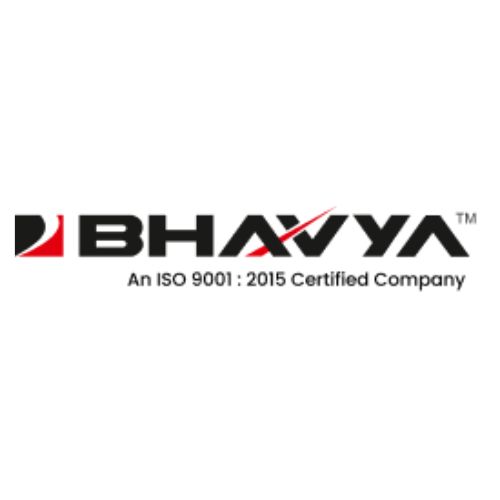Category Archives: Sheet Metal Machines

Evolution of Sheet Metal Machine
Today, Sheet Metal Machines are being widely used to perform cut, drill, press and shear on various hardened materials including aluminium, brass, copper, steel, tin, nickel, etc. These operations help reform the shape and size of the materials. Uses of…

Importance of Sheet Metal Machinery in Containerization Process
Containerization in International Transport International and local transport has grown considerably due to globalization and internationalization. There has been a global increase in dependency on commodities manufactured from low wage countries such as China, India, Africa and Asian nations. This…

High Speed Production of Railway Line
High Tensile Materials for Making Rail Components Transporting vehicle needs excellent strength to bear load and support durability of usage. Cast or wrought iron are the most important raw ingredients considered for making cross sectional shapes of railway rail. These…

Making of Metal Based Medical Devices
Types of Medical Accessories made from Machining Healthcare industry has extensive demand of minor to major gadgets made from metals. Machining equipments have significant roles to play in formation of metal based gadgets. These accessories range from small to moderate…

Perform Mechanical Operations on Sheet Metal Faster and Accurately Using Specially Designed Sheet Metal Forming Machines
Capitalize on your return and enhances production efficiency using sheet metal forming tools. These are well designed in ensuring efficiency accuracy and increases the mechanical performance in the metal forming industries. It is constructed with high quality materials enabling it…

Buying Guide for Sheet Metal Machines
Sheet metal machines are used for shaping, cutting, pressing, forming etc. metal sheets into various shapes and sizes. Different types of sheet metal units are available in the market. There are different for different jobs to be carried out. Before…

Sheet Metal Machineries for Shearing, Bending & Cutting
The various sheet metal machineries for shearing, bending and cutting are described below: Press Brake The mechanical press brake has a sturdy frame built from high grade steel. It also consists of steel plates with appropriate thickness and machined guide…

Guide to Various Kinds of Sheet Metal Machines Used in Workshops
Sheet metal machines are primarily utilized for cutting, shaping, pressing, and forming metal sheets into specific shapes and dimensions. Nowadays a number of sheet metal are available in the market. The various kinds of tools used in workshops are as…

Understanding Some Facts About a Sheet Metal Machine
These days a broad range of sheet metal machinery is utilized for performing various functions such as metal cutting, bending, pressing, forming, perforating, spinning, roll forming, press brake forming, deep drawing, rolling, decambering, ironing, stamping, etc. Moreover, these machines are…

Things to Know Before Buying Sheet Metal Machinery
A sheet metal machine is used to cut, press, bend and form sheet metal into various shapes and sizes. These help to easily, quickly and effectively; perform a wide range of tasks, such as cutting, stamping, bending, perforating, ironing, spinning,…

Why Sheet Metal Machinery is Considered as one of the Best Machine Tools?
Sheet metal is basically a large metal sheet that is shaped into small, thin and flat pieces. Different types of metals such as steel, brass, aluminum, copper, etc. can be formed into sheet metal of varying thickness. Very thin pieces of sheet metal…

Sheet Bending Machine, Types of Sheet Bending Machine, Applications of Sheet Bending Machine
Sheet Bending Machines - Types and Applications Metals need to be casted into different shapes and sizes for various applications in different industries. They are normally very hard and therefore could not be bent or shaped easily. For bending and…

Power Press for Sheet Metal Industry
Power Press for Sheet Metal Industry It is a sheet metal machine for cutting, shaping and compression of sheet metal with press mechanism is called as power press. Pressure is applied to shape and impression on material body. Different types…

Mechanical Power Press, Hydraulic Power Press, Pneumatic Power Press
Power Press It is a machine through which a metal sheet is cut or shaped or compressed with the pressure is known as power press. This cutting tool is fed into the work by pressure for shaping or impression on…

Types of Power Press, Applications of Power Press – C Type Power Press, Pillar Type Power Press
Power Press - C Type, Pillar Type It is used for bulk production from cold working of ductile materials like mild steel with rotating flywheel acting as energy storehouse to operate ram to impact on the workpiece. It is used…

Sheet Metal Machine – Types of Sheet Metal Machines, Applications of Sheet Metal Machines
Sheet Metal Machine Machine tools are the devices used to cut, drill, press, and shear the hardened materials into specific forms. Metal Forming Machine are used to cut, press, bend and form sheet metal into different shapes and sizes. Various…





